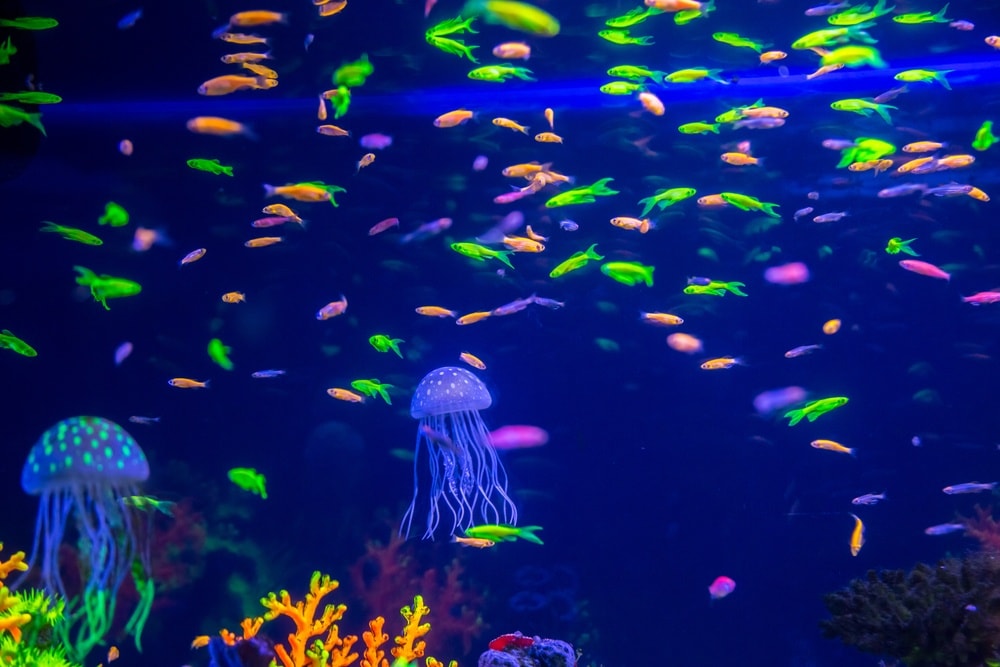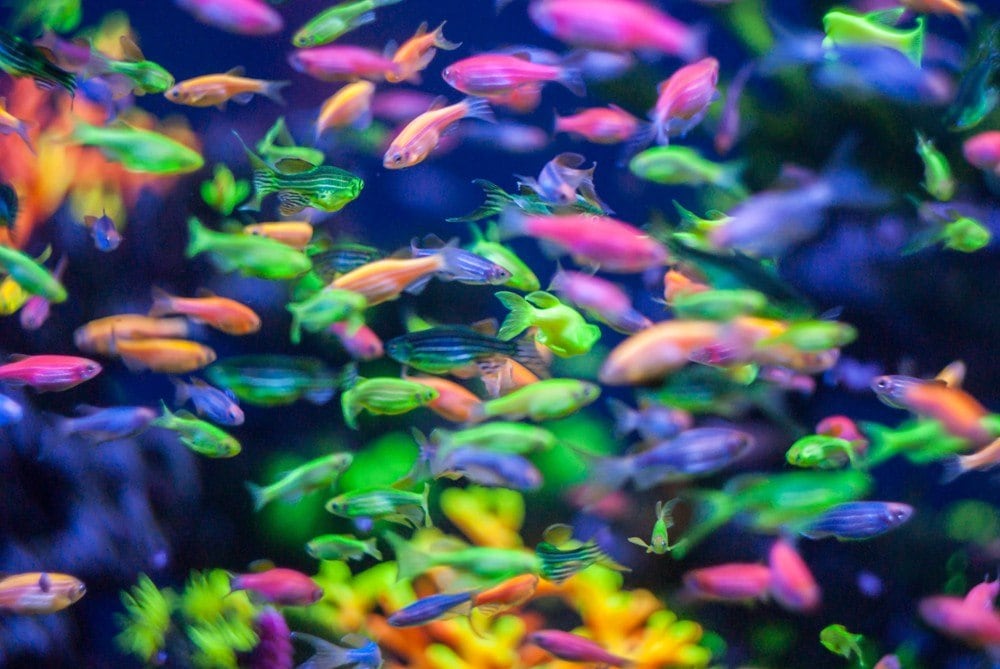The GloFish is among the favorite pet fish of many. However, taking care of it could be a little bit tricky.
Many owners have experienced seeing their GloFish dying. Some of the signs include non-activity, lack of interest in food, or difficulty in breathing underwater, which we’ll discuss further below.
In this article, we’ll discuss some signs of your GloFish dying as well as provide some tips and tricks so that your GloFish can live a healthy life.

Table of Contents
What are GloFish?
The GloFish is a genetically modified variant of the zebra danios or scientifically named Danio rerio. If the scientific name does not ring a bell, you may better know these striped fishes as simply zebrafish.
If you wonder what sets the GloFish apart from zebra danios, then the answer is in a tweak in their genetic makeup. Singaporean researchers added a fluorescence gene from corals to the GloFish. Thus, whenever the GloFish are exposed to environmental toxins, they glow! This must also be why many people mistake the spelling of GloFish for “glowfish.”
How do I know if my GloFish is dying?
Because of poor water quality, a GloFish could be subjected to diseases and could die prematurely. The most significant telltale sign of a dying glofish is non-activity.
Often, a dying GloFish will be found immobilized in the bottom of a tank. For instance, during its final days, the GloFish tetra breathes slower. Although they sometimes emerge from the water to take a breath, they cannot tread the water for long. Thus, they naturally settle at the bottom of an aquarium.
On the other hand, abnormal swimming patterns like treading the water for too long could also be a sign. You must also be wary when your fish does not eat at all or seems to have grown thinner. Mentation of fish, fading of color, and an irregular rate of respiration are some behaviors that you must look out for as well.
The following sections will be explaining some things you need to keep in mind if, by chance, your GloFish is indeed dying, along with tips on how to take care of your GloFishes better.
How do you save a dying GloFish?

If you believe that your GloFish may be dying, then it is appropriate that you take immediate action to save it. If your GloFish is in a fishbowl, make sure that a powerful pump accompanies it for a strong and consistent supply of air.
If your fish does not show any signs of improvement, then you can bathe it with Epsom salt. Make sure to separate your sick GloFish from the rest of your fish when you conduct the treatment. Place the fish in a treatment tank for 30 to 45 minutes containing 1 gallon of warm water mixed with two tablespoons of Epsom salt.
What do you do with dead GloFish?
When they are sick, GloFish tend to hide. Thus, you should always check the bottom of your aquarium and under rocks whenever your GloFish is missing. Chances are, they have already died and are just hidden behind stones.
Once you find your dead fish, you must take them out of your aquarium and place them in a separate container where they can undergo a treatment program. If you do not remove your fish immediately, your whole tank and other surviving fishes may be exposed to diseases. Thus, it is also vital to change your water after your GloFish dies.
Are GloFish hard to keep alive?
Like any other fish, the GloFish may one day meet its inevitable demise. It is not to say that they are tough to maintain. However, they do have a short life span of 3 years. If you feed them healthy food such as flakes, frozen or pelleted food, it may grow up to 2.5 inches long.
Additionally, the GloFish thrives in a cozy aquarium that holds at least 5 gallons of water. Specifically, the GloFish need warm water. As it prefers a tropical environment, it is recommended to stay around 72 to 80 degrees Fahrenheit. However, there have been instances where the Glofish have survived in waters as low as 62 degrees Fahrenheit.
The key is to make sure that the temperature does not change drastically, as quick changes in its environment could make the GloFish sickly. A good range would be less than 20 degrees of fluctuation.
Do GloFish need light to survive?
Glofish need aquarium lighting for them to emit light. As they are bioluminescent, absorbing light is essential for them. However, lighting must mimic the light of day and night to keep them healthy. Ideally, the GloFish needs 8 to 10 hours a day to simulate daylight.
While its color and bioluminescence can be eye-catching to pet owners, many end up witnessing the untimely death of their GloFish. Taking care of these unique fishes can be quite a handful which is why you need to be mindful about the conditions required for a healthy tank where your GloFish could thrive.
Want to know more? Take a look at our aquarium articles now!